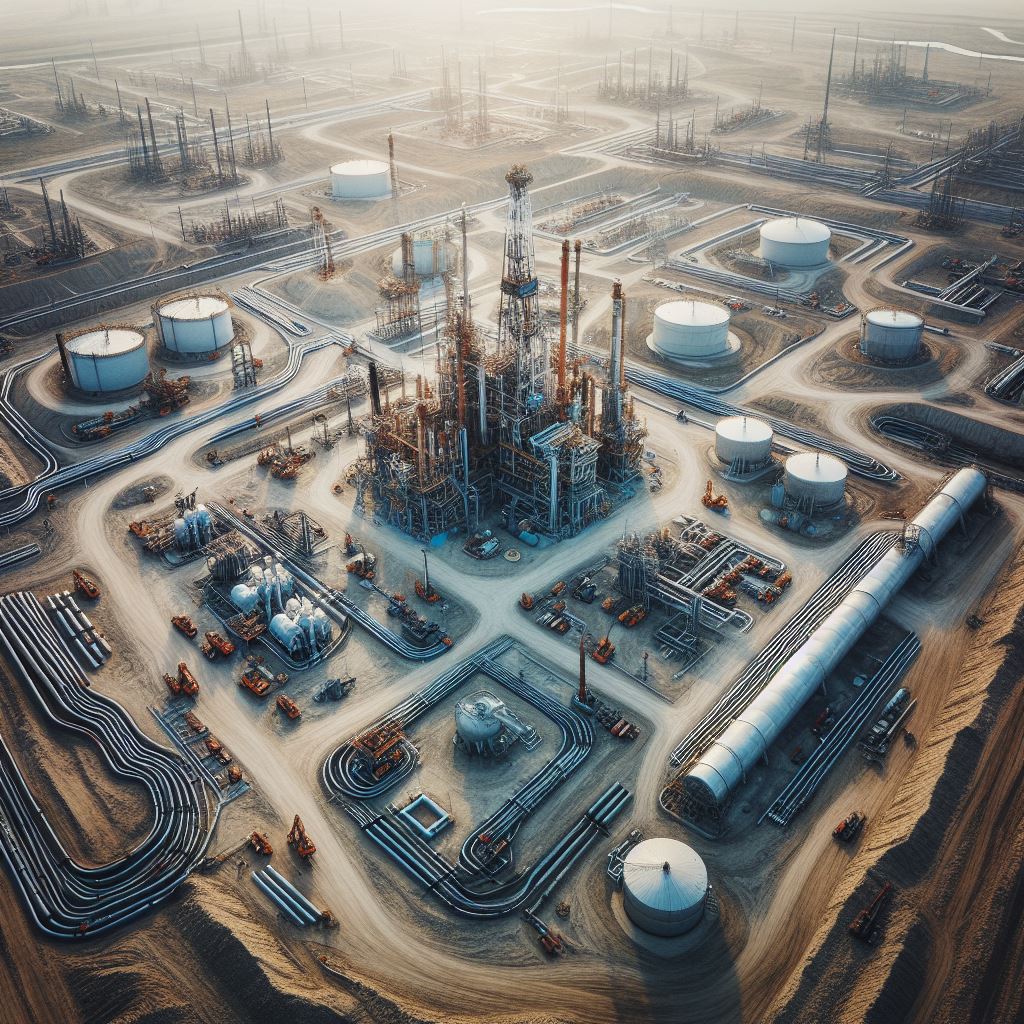Methane hydrates, enigmatic yet potentially revolutionary, are at the forefront of an evolving energy narrative. These compounds consist of methane molecules enigmatically trapped within a water ice lattice, existing under the unique conditions of high pressure and low temperature prevalent in the oceanic sediments and, somewhat, in the Arctic permafrost. The extraction and usage of methane from these hydrates promise a paradigm shift in energy resources, given their abundance and potential.
The global estimates of methane trapped in hydrate form are staggeringly high, dwarfing the combined carbon content of existing oil, natural gas, and coal reserves. This hints at a latent energy reserve that could dramatically alter global energy strategies and challenge our traditional reliance on fossil fuels. The allure of methane hydrates is in the strategic advantage they offer in terms of energy security. Countries with significant hydrate deposits could find themselves holding the keys to a future energy kingdom, reducing their dependence on imported fossil fuels.
The road to utilizing methane hydrates is fraught with technical and environmental challenges. Extracting methane from its icy prison requires innovative technology that can safely release and capture the gas without destabilizing the ocean floor or releasing amounts of methane into the atmosphere, a potent greenhouse gas. The melting of methane hydrates is already a concern in the context of climate change, as rising temperatures could lead to their unintended release, exacerbating global warming.
Despite these challenges, the potential benefits drive ongoing research and exploration. Successful development of methane hydrate resources could lead to a more diversified and secure energy portfolio for many nations. It offers a cleaner alternative to coal and oil, given methane’s higher combustion efficiency and lower carbon dioxide emissions per unit of energy released.
Navigating the Challenges
Unlocking the secrets of “fire ice,” or methane hydrates, presents a tremendous opportunity but is laden with formidable obstacles. The extraction of methane from these icy compounds, nestled within the ocean floor or Arctic permafrost, poses significant technological and environmental dilemmas. One chief concern is the potential atmospheric release of methane during extraction, a scenario that could considerably amplify the effects of climate change owing to methane’s efficacy as a greenhouse gas.
The mechanisms for methane hydrate extraction—operating under extreme oceanic depths and conditions of high pressure and chilling temperatures—demand innovative and pioneering technology. Among the various methods under exploration, depressurization stands out. This technique reduces the pressure enveloping the hydrate deposit, destabilizing the hydrate structure and liberating methane gas. Concurrently, thermal stimulation is another approach being tested, which involves raising the temperature of the hydrate deposit to facilitate methane release. These methodologies represent the forefront of efforts to tap into this elusive energy source, yet they carry inherent risks and challenges that cannot be overlooked.
The quest for a stable and effective extraction process is compounded by the potential environmental impact. Disrupting the seabed could have unforeseen consequences on marine ecosystems, and the precise impact of large-scale extraction on oceanic chemistry and dynamics remains an area of active research.
The development of safe, reliable, and environmentally responsible extraction technologies is paramount. As such, the energy industry, alongside research institutions, is investing in extensive studies and pilot projects to better understand and mitigate the challenges associated with methane hydrate extraction.
The Bright Horizon
The horizon glows with promise as the allure of methane hydrates, those enigmatic sources of energy encased in ice, beckons humanity toward a potential revolution in the energy sector. The path toward exploiting this resource is being steadily marked by remarkable advancements in drilling technologies, seismic survey techniques, and an ever-deepening comprehension of oceanic methane hydrate deposits. Nations such as Japan, the United States, and China, cognizant of the strategic imperative to anchor their energy futures on secure and substantial sources, are leading the charge. These countries are funneling significant investments into the research and exploration of methane hydrates, envisioning a future where this resource bolsters the global energy supply.
The dream of a successful extraction process stands on the brink of reality, promising to overturn current energy paradigms. Methane hydrates offer a compelling prospect – a steady, fairly clean burning source of fuel that has the potential to act as a critical transitional energy, bridging the current divide between traditional fossil fuels and renewable energy sources. This could significantly alter the energy landscape, providing a more robust and diversified energy mix capable of meeting global demands with reduced carbon footprints.
The sector is buzzing with the development of innovative, environmentally sensitive technologies aimed at mitigating the inherent risks of methane hydrate extraction. One of the most promising fronts in this regard is the advancement of carbon capture and storage (CCS) technologies. These innovations hold the potential to sequester it, thus considerably diminishing the environmental impact of hydrate exploitation. Such technological strides could pave the way for a more sustainable approach to harnessing the energy of methane hydrates, aligning with global efforts to combat climate change.
The promise of methane hydrates is crystallizing into a tangible opportunity, with the dual focus on pioneering extraction methods and environmental stewardship shaping the contours of this emerging field. As extraction technologies mature and become increasingly feasible, and as strategies to mitigate environmental impacts gain efficacy, the stage is set for methane hydrates to transform from a curiosity of nature into a cornerstone of future energy sustainability. In this evolving narrative, methane hydrates could indeed provide the much-needed impetus to straddle the worlds of fossil fuels and renewable energy, offering a brighter, cleaner horizon for global energy consumption.
The Rise of Methane Hydrates in Energy Exploration
Methane hydrates emerge as a shining beacon of untapped potential. While laden with both technical and ecological challenges, presents a horizon brimming with promise. Envision a world liberated from the specter of energy scarcity, illuminated by the clean, abundant energy from natural gas, drawn from the reservoirs of methane hydrates lying dormant beneath our oceans and permafrost. Such a future, where our cities, industries, and homes are powered with minimal environmental fallout, captures the essence of the potential embodied by methane hydrates.
The key to unlocking this boundless potential lies in a steadfast commitment to research and development. It calls for a confluence of global efforts, uniting scientists, engineers, policymakers, and environmentalists in a shared quest to harness this resource responsibly. Through continued investment in groundbreaking technologies and methodologies for safe extraction, and by navigating the delicate balance of environmental impact, we edge closer to realizing this vision.
Global collaboration is paramount. The complexities and scale of challenges associated with methane hydrate extraction transcend national boundaries and demand a coordinated, international response. Sharing knowledge, resources, and best practices can accelerate progress, mitigating risks and enhancing the efficacy of extraction techniques.
Environmental stewardship forms the cornerstone of this journey to harnessing methane hydrates. It’s doing so in a manner that aligns with our broader environmental ethos. As we advance, developing sustainable extraction methods that minimize ecological disturbance and effectively manage any unintended releases of methane becomes imperative. The integration of carbon capture and storage (CCS) technologies alongside methane hydrate extraction efforts could offer a holistic approach, ensuring that our pursuit of energy security does not come at the cost of environmental integrity.
Fostering an ecosystem of learning and exploration around methane hydrates is crucial. By nurturing a culture of innovation, driven by a shared commitment to sustainability and energy security, we can navigate the challenges that lie ahead. This collective effort will unlock the tremendous potential of methane hydrates and ensure that their development proceeds hand in hand with our aspirations for a future where energy is both abundant and harmonious with the Earth. In this way, methane hydrates could indeed become a cornerstone of a sustainable, energy-abundant future, steering us to a world where energy does not compromise the health of our planet.


